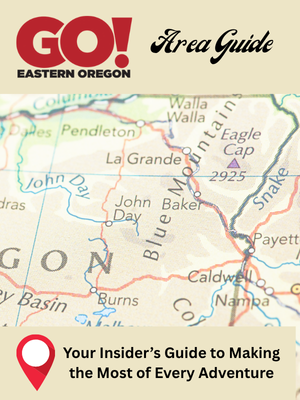COLUMN: Sunset from a lookout, and the magic of Kam Wah Chung
Published 12:00 pm Friday, September 15, 2023
The day gives ground only grudgingly when you’re standing atop a mountain.
The light surrenders with a sluggishness peculiar to such lofty places and the night approaches gently and with stealth, like the dainty steps of a deer at ease.
I spent two nights recently in a fire lookout on a summit near John Day, and I was surprised by how different dusk seemed compared with my usual vantage point.
From my home in Baker City the sun, in high summer, dives behind the great wall of the Elkhorns.
This is rather a sudden leap, with just a couple minutes elapsing between the disc first touching the mountain’s silhouette to disappearing.
Some light persists, of course — there is a reason we distinguish between the transitional period of dusk and the absoluteness of dark.
But from the apex of Fall Mountain, on the divide between the John Day and Silvies rivers, the sun’s descent below the horizon seemed to me a comparatively modest event, a minor interlude in a much longer progression.
There is just so much more sky, so much more light.
The great blue bowl sprawled overhead in a way that made me feel a trifle queasy, as though I were standing on the brink of a precipice.
The sensation was exaggerated because I was, in fact, above the ground.
But the tower at Fall Mountain is just 18 feet tall, so I don’t think the effect was extreme.
We were more eager than usual for darkness to fall, to be sure. Our stay at the lookout coincided with the peak of the Perseid meteor shower. I had also lugged our telescope up the tower’s 29 steps and hoped to put its powerful lenses to better use than I can at home amid the light pollution of a town.
Stars began to glitter in the east, matching the lights from Seneca, conspicuous at the south end of Bear Valley.
But even as the haze of the Milky Way began to spread across a section of sky to the southeast, the pale blue light persisted across the western horizon, turning the peaks of the Aldrich Mountains, one of Oregon’s lesser-known ranges, into stark silhouettes, rather like the images depicting mountains in cartoons featuring Wile E. Coyote’s endless, and fruitless, pursuit of the Roadrunner.
Although the wait for full dark was longer than I expected, I didn’t begrudge the extra minutes.
I relished the chance to see the transition from day to night as an immersive experience. At home, often as not, with the artificial glare of LED bulbs, I don’t even notice.
It was fine to be reminded that even this most predictable of events retains the magic of all natural phenomena, if only you’re in the right place to watch.
— — —
I don’t believe a person can truly appreciate the scope of Oregon’s story until they have walked through the modest stone building in John Day bearing a sign reading “Kam Wah Chung & Co.”
Among the state’s structures I believe it to be among the dozen or so most noteworthy.
The building, a National Historic Landmark and the centerpiece of a state park, was for more than half a century the home to Chinese immigrants and business partners Ing “Doc” Hay and Lung On.
But Kam Wah Chung — meaning “golden Chinese outpost” — was quite a lot more than a home.
The building was constructed in 1865 as a stop on the stagecoach route between The Dalles and John Day. Doc Hay, born in China in 1862, and Lung On, born in China in 1863, bought it in 1887 and converted it to a unique combination of mercantile and medical clinic.
Lung On operated the mercantile while Doc Hay, employing the traditional Chinese method of pulsology, in which he measured a patient’s pulse at more than a dozen places, treated all manner of ailments.
The pair became prominent citizens of John Day and Grant County. Both are buried in the John Day cemetery. That alone would make the Kam Wah Chung story remarkable, given the antipathy toward Chinese immigrants, exemplified by the federal Chinese Exclusion Act of 1882.
But what makes Kam Wah Chung so notable, and so irreplaceable, is what’s inside.
Which is, put simply, pretty much everything that was there when Doc Hay, who was in poor health, closed the business in 1948 and moved to Portland, where he died four years later. Lung On had died in 1940.
This distinguishes Kam Wah Chung from most museums. Even the best of these typically uses artifacts that are period-authentic but not, in many cases, directly connected to the place.
But at Kam Wah Chung the items — and there are thousands crammed into a building where an adult of average height has to stoop a bit to move between rooms — are those which Doc Hay and Lung On touched and used and saw every day.
I have felt a similar sensation while touring Leo Adler’s longtime home in Baker City — the idea that I am standing on the same section of floor where the great philanthropist must have walked hundreds of times, looking through the same windows where he so often took the measure of the day.
But the feeling is especially strong at Kam Wah Chung because the building has been so little changed. It takes no great imagination, it seems to me, to imagine Doc Hay and Lung On — diminutive men, like Leo — going about the daily tasks in this cramped and dark space so far from the families they had left in China.
Surely their spirits, if such things exist, linger here, as permanent as the soot stains on the walls from thousands of fires.








